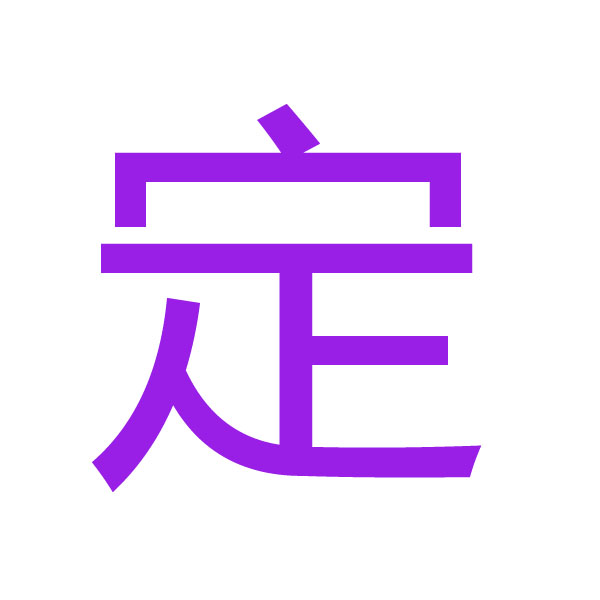
1. Kanji Breakdown: 定
This kanji represents a fundamental concept of stability, decision, and established rules.
Meaning: To fix, to decide, to determine; fixed, settled, definite; regulation.
Reading:
Onyomi (Sino-Japanese reading): テイ (tei), ジョウ (jou)
Kunyomi (Native Japanese reading): さだ(める) (sada(meru)), さだ(まる) (sada(maru))
The kanji is a compound ideograph (会意文字). It consists of two parts:
Top (宀): This is the "roof" radical (うかんむり), representing a house or a building.
Bottom (正): This means "correct," "right," or "proper."
The elegant meaning is "to make correct under a roof" or "to settle something correctly in its place." This imagery evokes the idea of establishing order, stability, and fixed rules within a household or society.
2. Stroke Order and Writing
Learning the correct stroke order is crucial for balanced and beautiful kanji. "定" has 8 strokes.
Here is the stroke order diagram and explanation:
Total Strokes: 8
Start with the top radical "宀" (roof radical):
Then, write the bottom part "正":
Key Writing Tips:
Write from top to bottom.
The roof radical "宀" should be wide enough to "shelter" the bottom part.
The bottom part "正" should be centered and stable. Pay attention to the final horizontal stroke, which is the longest and anchors the character.
The overall character should feel stable and "settled."
3. Vocabulary and Example Sentences
Here are some common words using "定" and how to use them in sentences.
Vocabulary
定める (さだめる, sadameru)
Meaning: To establish, to decide, to fix (a rule, law, etc.).
Example: 規則を定める。
Romaji: Kisoku o sadameru.
English: To establish rules.
定価 (ていか, teika)
Meaning: List price, fixed price.
Example: この本の定価は1000円です。
Romaji: Kono hon no teika wa sen-en desu.
English: The list price of this book is 1000 yen.
安定 (あんてい, antei)
Meaning: Stability, security.
Example: この机はとても安定している。
Romaji: Kono tsukue wa totemo antei shite iru.
English: This desk is very stable.
定規 (じょうぎ, jougi)
Meaning: Ruler (measuring tool).
Example: 定規で線を引く。
Romaji: Jougi de sen o hiku.
English: To draw a line with a ruler.
確定 (かくてい, kakutei)
Meaning: Confirmation, decision, to finalize.
Example: 予定が確定した。
Romaji: Yotei ga kakutei shita.
English: The schedule has been finalized.
定年 (ていねん, teinen)
Meaning: Retirement age.
Example: 父は来年定年を迎える。
Romaji: Chichi wa rainen teinen o mukaeru.
English: My father will reach retirement age next year.
Summary
Kanji: 定
Core Meaning: To Decide, To Fix; Fixed, Settled; Regulation.
Readings: On'yomi テイ (tei), Kun'yomi さだめる (sadameru)
Stroke Order: 8 strokes. Remember it's composed of 宀 (roof) and 正 (correct). Practice writing it step-by-step to master its stable form.
This kanji is essential for discussing rules, decisions, prices, and stability. By mastering its stroke order and vocabulary, you will be able to correctly write and use this fundamental character.